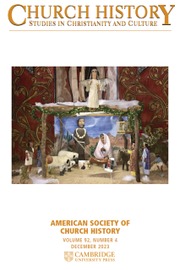No CrossRef data available.
Article contents
Rural History, Urban Students
Published online by Cambridge University Press: 07 April 2025
Extract
As a faculty member with a teaching load of four classes per semester at a public university, my approach to reading from Dust They Came by Jonathan H. Ebel and Sowing the Sacred by Lloyd Daniel Barba is born of the necessity of trying to streamline my workload as a teacher-scholar and bring new material to my students. My institution frequently ranks highly on lists that measure social mobility, largely because the students we admit are often among the least affluent in the state. It also ranks highly for diversity, as a Hispanic Serving Institute, and as the state university that leads the way in graduating Black students. But these students are also thoroughly urban, often with little travel experience beyond the Los Angeles metropolitan area. Histories of the state’s agricultural regions, places they often imagine as barren land, are a harder sell. Our majors, however, are curious both about the lives of people that have not been well-documented and about the world outside of our geographic region, and these books as a pair, can satisfy that curiosity if I can present related themes that resonate with the students. I have found that looking at the institutions in these works (the government camp and the church) as ones meant to serve as examples of an idealized way of American life, thinking about the way such institutions often regulate the poor, and looking at how geography impacts experience are all key components of these works that might be interesting to students.
- Type
- Book Review Forum
- Information
- Copyright
- © The Author(s), 2025. Published by Cambridge University Press on behalf of American Society of Church History


